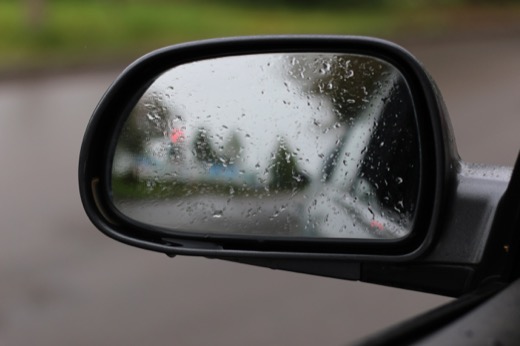Every day there are thousands of avoidable accidents that damage the property of, or seriously injure, people who were in no way at fault. In fact, collisions resulting in fatalities were on the rise last year in 2015, according to the National Highway Traffic Safety Administration. Distractions play a large role in accidents, as well as excessive speed, alcohol, and driving while drowsy. However, even when drivers are attempting to be careful, accidents, where they will still be found negligent, can still happen. One such case is the scenario of an improper merge, lane change, or turn that results in a side impact. Even if the driver checked their mirrors and looked over their shoulder, they still may miss that smaller vehicle in their blind spot. While blind spots may seem like an unfortunate reality no matter what, there are some simple steps to take to get rid of them. Simply by properly adjusting your vehicle’s side view mirrors, these blind spots can be reduced or even fully eradicated.
Tilt Mirrors Out for Full View of Traffic Behind
Side and rear view mirror adjustment may seem pretty standard practice. You adjust the side mirrors out far enough to see the traffic directly to the side of your vehicle, and aim the rear view mirror to show you what is directly behind. Most people do this incorrectly, however. It may be comforting to see the sides of your own vehicle in the side view mirrors, but by angling them that far in, you miss out on the vital spot that is to the side and rear of your vehicle. This blind spots misses approaching vehicles that may be accelerating past you. The mirror, if not properly adjusted, will show nothing, and a quick glance over your shoulder may not be enough to get a clear view. Instead of angling the mirrors in to see the sides of your vehicle, push them further out. You should not be able to see your vehicle at all, and instead you will have a better view of what is to the side. Angle the rear view mirror so that it just barely overlaps with what is seen on the very edge of your side view mirrors.
This procedure of mirror adjusting was introduced by a paper written by the Society of Automotive Engineers. In order for it to work, you must ensure that all three mirrors are properly angled at all times. For larger, longer vehicles, an extended side view mirrors or a fisheye mirror (a convex bubble mirror) attachment can help to further decrease blind spots. While the Society of Automotive Engineers argue that this mirror adjusting technique negates the need to look over your shoulder, we do not condone that philosophy, as there is always a chance that the mirrors were knocked out of place or that a smaller road user, such as a motorcyclist or bicyclist, is off to the side of you but does not appear in your mirrors due to their height. Blind spots can be especially problematic in taller or longer vehicles, which is why careful mirror adjustments in addition to glancing over your shoulder is vital for every lane change or turn.
If you have been injured by a driver who failed to yield the right of way by turning into you, you may be able to receive compensation for your damages. To find out more, contact an experienced Columbus, Ohio, car accident attorney at the law offices of the Ohio Car Accident Lawyers .





